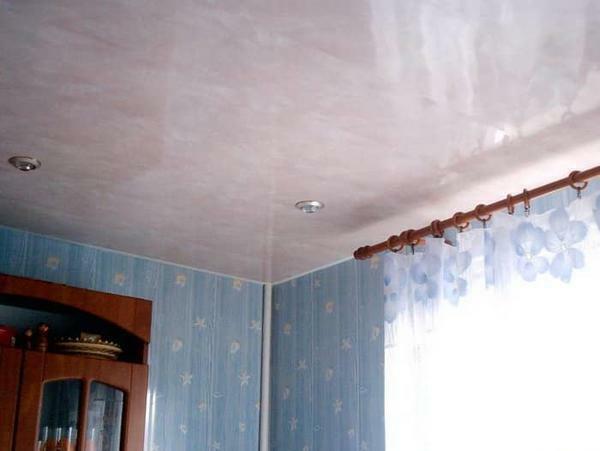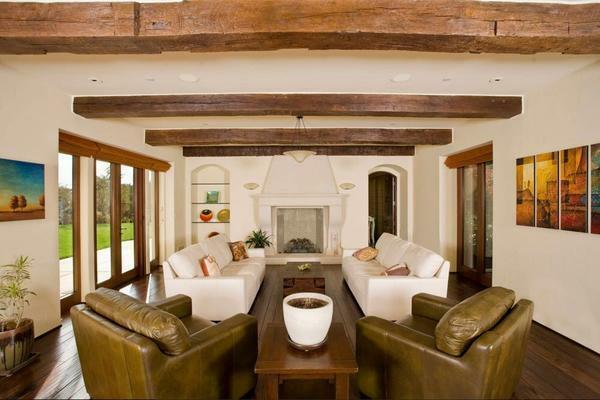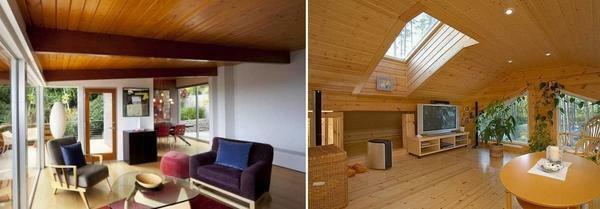Contents of
- 1 No repairs can be perfect, without even ceiling. It is for this reason that the problem of how to repair rusts on the ceiling excites all apartment owners in the panel houses built in Soviet times. Even those seams that have been sealed neatly, eventually disperse for completely natural reasons - plate movements and house sagging. Rusts on the ceiling is the junction of the plates and in perfect condition it looks like a fairly neat groove with a width of 50 mm with oblique smooth bevels. By the time when repair is required, the situation in reality is far from the reference one. At best, it cracked and sometimes the solution crumbled, at worst - the plate divergence, which requires equalization of the entire flow.
- 1.1 Preparation and determination of the scope of work required with the
- ceiling 1.1.1 Work procedure
- 1.1.1.1 Finishing of the joints
- ceiling 1.1.1 Work procedure
- 1.1 Preparation and determination of the scope of work required with the
No repair can be ideal, without even ceiling. It is for this reason that the problem of how to repair rusts on the ceiling excites all apartment owners in the panel houses built in Soviet times. Even those seams that have been sealed neatly, eventually disperse for completely natural reasons - plate movements and house sagging. Rusts on the ceiling is the junction of the plates and in perfect condition it looks like a fairly neat groove with a width of 50 mm with oblique smooth bevels. By the time when repair is required, the situation in reality is far from the reference one. At best, it cracked and sometimes the solution crumbled, at worst - the plate divergence, which requires equalization of the entire flow.
Preparation and determination of the volume of necessary work with the ceiling
Any repair of rusts on the ceiling begins with preparation. The decorative coating is removed, whitewash and water-soluble paints are blurred. Here are ways to remove old paint from the surface.
The seam is expanded with a spatula. The crack expands, all the crumbling areas are removed. If the solution easily cleaves, it is necessary to remove it completely to the concrete, thereby you will get rid of further delaminations when painting the ceiling.
Before inspecting the seams on the ceiling, a visual inspection of the faults and measurement of the displacement is carried out. In cases where the difference does not exceed 5-7 mm, and the width of the crack is small, it can simply be restored without further leveling all the surfaces. If the difference is significant 7-10mm, then after, the rust on the ceiling will have to be pulled out to level the difference. With more significant defects, it is recommended to install false ceilings. Align the large drops with the help of the solution, and some materials allow you to apply a large layer, but this will cost more. In this case, it is much more rational to use gypsum cardboard systems or stretch ceilings.
Order of work
Competent repair of rusts on the ceiling - a guarantee of the absence of cracks for several years. For work we will need:
- primer, which increases the adhesion of materials, the best concrete-contact and its analogues;
- fiberglass mesh( serpent);
- spatula steel;
- plaster plaster mixture( Rothband, Starateli, etc.);
- with a large slit width - mounting foam.
Surface rusta carefully moisten with a primer and wait until it dries completely. If the width of the crack is large, fill it carefully with a mounting foam, so that it does not protrude below the ceiling surface and leave for a day. Before fixing a crack on the ceiling, it must be filled with a plaster mortar. Ideally, Rothband should approach about a third and lay the serpian , so that the middle of the tape coincides with the center of the rust. The fiberglass tape will serve as reinforcement, it will protect against cracking, even with small slides that are inevitable in the future.

After that, the groove of the rust is gently filled with gypsum plaster and leveled. If there is a small drop, then the entire surface area, which turned out higher, should be puttied. To align the layer, it is convenient to use the steel rule. If the experience of plastering allows, you can use a more convenient and light wide spatula.
After drying, the entire flattened surface is leveled using a special grater or grinder. The further order of work depends on the finishing method. Also come to eliminate any defects. If you need to repair a hole, crack or chips on the ceiling, they also need to be cleaned, primed. For defects of a large area, use reinforcement of fiberglass or metal plaster mesh.


Finishing of joints
After complete drying of the restored rusts, you can proceed to preparation for finishing. If the difference was insignificant, then the entire surface is primed with a penetrating solution. After that, just shpaklyuyut finish gypsum mixture( KNAUF, Volma and their analogs).After a thorough grouting, such a ceiling is re-primed. Now the surface can be painted, wallpapered.
If the difference was significant, then the ceiling needs to be leveled. Minor unevenness can simply be carefully pulled out with a layer of plaster, making the unevenness almost imperceptible. But, this method of solution is not always suitable. In such cases, a complete leveling of the surface is necessary. This work is quite laborious, will require not only a lot of patience and diligence, but also the availability of convenient goats. If the total layer of plaster is more than 5 mm, the use of beacons is recommended.
At elevations over 10mm, all experts recommend the installation of a false ceiling, but the rusts must first be pre-insulated. It is rational for these purposes to use a mounting foam, since afterwards they will simply close, and a neat appearance is not necessary. After that, the ceiling can be leveled with gypsum board construction or by means of tension systems. The resulting surface will be perfectly flat.


